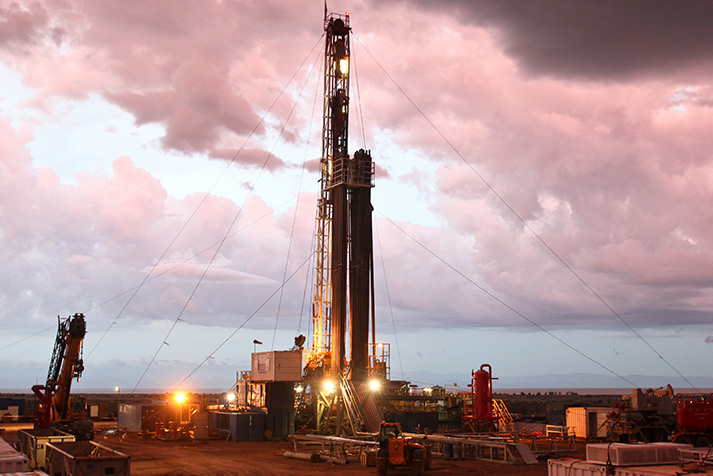Uganda is set to formally sign the contract for the construction of the US$4 billion oil refinery as early as April 10, 2018, sources involved have indicated.
The Ministry of Energy and Mineral Development officials together with the Albertine Graben Refinery Consortium, which is led by General Electric, initiated the refinery contract on March 28, 2018, different sources have confirmed.
The contract will include the construction of a 211-kilometre petroleum products pipeline from Hoima to Buloba, which is located northwest of Kampala. The signing of the contract will end a more-than-five-year struggle by the Uganda government to get a company to invest in a refinery, whose return on investment has been questioned.
The refinery will be built under a public-private partnership, favouring the consortium with a 60 per cent shareholding while the government, through the national oil company, will retain the other 40 per cent, the sources said. Uganda is expected to invite East African states to buy into its 40 per cent stake, with Tanzania earlier committing to taking up about seven per cent of this stake.
There appears to be a slight change in the setup of the consortium, sources say. The original consortium was made up of General Electric, Saipem SPA from Italy, Yaatra Ventures from the United States of America and Intra-continental Asset Holdings. However, there is a company called Lionworks, which has replaced Intra-continent Asset Holdings.
“The profile of the consortium looks quite weak and there are some doubts it can pull off a USD4b project. There is little independent publicly-available information about Intra-continent Asset Holdings and Lionworks. Questions are bound to be asked as to how this consortium will be able to attract the capital and expertise to build the refinery,” an analyst said.
However, in October, the Albertine Graben Refinery Consortium had posted a US$2m commitment bond with government ahead of the signing of the Project Framework Agreement (PFA). Up to 70 per cent of the financing of the refinery will be through debt with the other 30 per cent coming in as equity from the project Oil and Gas partners.
In August last year, the government announced that it had “agreed core project terms” for the refinery project. It was noted that after the signing of the PFA, the consortium would be required to finance all pre-Final Investment Decision activities up to US$100m. The Pre-FID activities, according to the terms of the arrangement, include market studies, logistics studies, technology licensing, refinery configuration studies, Environmental and Social Impact Assessment, and Front End Engineering Design. These activities are expected to start after the signing of the contract.
The major upstream companies operating in Uganda – Total, Tullow and Cnooc – had for long preferred a crude oil export pipeline because they felt the product had a more lucrative market abroad. Uganda’s government thought otherwise, throwing its weight behind the construction of a refinery. Government commissioned a Swiss firm, Foster Wheeler, to come up with a report that offered pointers on how an oil refinery made economic sense, especially from the perspective of creating spin-off industries such as those that make bitumen, which is crucial in the construction industry. Compromises needed to be made. To get the three oil companies to commit investments in the country, the Uganda government agreed to the demands of having a crude oil pipeline. However, it never dropped its ambition of building a refinery.
The structure of having an oil refinery and a crude oil pipeline led to another important negotiation: how much crude would each take and which infrastructure would take the first call on the oil resources. Government settled for a 30,000-barrels- per-day refinery, which would later be ramped up to 60,000. The refinery, it was agreed, would take the first call.
Earlier figures showed that the crude pipeline would carry 120,000 barrels of oil per day, shooting up to 180,000 barrels only after the refinery’s demands had been met. Now, current figures show that the crude oil pipeline will carry about 212,000 barrels of oil per day.







